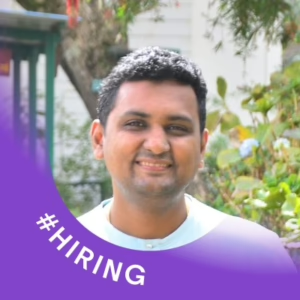According to HR expert Josh Bersin, 2025 is the year when HR and recruitment departments will have to embrace new technologies. He believes AI will give employees “superpowers” in the near future, but that businesses must be flexible and quickly adapt to take advantage of these new opportunities. This is an excerpt from Bersin’s essay about the prospects for 2025.
2025 – The Year of the Superworker
It’s our decision to use this superpower. It’s not the next step in a Marvel or DC film, but a metaphor of what is happening at workplaces around the world due to AI. What began as modest productivity gains is now evolving into completely new ways of working. It has moved from automating routine task to generating its own data-driven solutions.
AI will soon be a part of our daily lives, and we won’t even notice them. They’ll just blend in with our workflows. HR is responsible for leading the charge during this crucial transition period to prepare organisations and teams in advance of the productivity revolution. In 2025, “robot friends” will be working alongside us to improve efficiency and impact.
“Based on my conversations, I can tell that AI intimidates many employees. Make sure you position your AI investments as tools to augment jobs, and not replace people.”
The HR department will be the first to see this shift. AI has already transformed talent acquisition, analysing job requirements and sourcing candidates. It also compares skills and assesses cultural fit.
AI will also drive a shift towards “productivity-based organization design”, where roles and jobs are restructured in order to take advantage of the increasing capabilities of AI platforms. This shift is exemplified by the rapid growth of multifunctional agents, which makes job redesign a top trend.
In 2025, the key themes will be two: a. how AI can be used to redesign jobs, processes, and work; and b. how employees can collaborate more effectively using these tools. Organisations will spend a lot of money in the next few quarters on re-designing work, empowering their teams, and managing systems effectively to maximize AI’s potential.
Use AI to your advantage
Companies must be responsible in order to implement AI successfully. Prepare action teams to tackle issues like:
- How much visibility should HR have over employee AI usage? For example, should we see all the prompts they use and their usage patterns.
- Who owns the Intellectual Property created by AI platforms employees?
- Who is responsible for the security and privacy of data when employees upload content to social media?
- How can we test and govern AI to avoid institutionalising bias?
- How can we choose and partner with vendors that we trust?
- How can we protect our systems from external threats such as the Internet, customers, suppliers, and partners?
- Who is responsible when AI produces incorrect or harmful data?
There is a lot of hard work ahead, along with the potentially sobering realization that, as AI becomes more ubiquitous, success depends on business design, processes, and job descriptions (and culture), rather than just technology. It is not enough to enable tools such as MS Copilot, which summarize meetings. This is just a commodity and will not give you a competitive advantage. Your ability to redesign roles and work for high-valued productivity will be the real differentiator.
Expectations of salary will rise
In 2025, the Year of the Superworker will be a boom in the demand for IT, software, and data roles. This is especially true in the data management field, since AI relies on accurate labelling and tuning. Non-technical experts will also gain a lot as they use AI to improve their performance and profile. Both groups expect to be compensated for their contributions or they will walk. In the future, compensation will reflect more on value and abilities than just titles.
This shift is reflected in the rapid growth of multifunctional agents, which makes job redesigning the trend to watch.
This change will disrupt HR practices such as performance evaluation, where metrics are changing from adoption rate to measurable productivity improvements. Inflationary pressure will also be placed on wages. Although increased productivity usually means lower labour costs for employers, average wages per worker are likely to increase – or be strongly advocated. Be prepared for a few tense discussions about AI. Based on my conversations, I can tell that AI intimidates many employees. Make sure you position your AI investments as tools to augment jobs, and not replace people.
Share this simple message with your boss. AI can analyze endlessly, but humans are the ones who decide what is important.
Prepare for a new model of talent
This suggests that the traditional approach to talent development, from pre-hire to retirement, isn’t going to be very helpful. Although we need processes such as onboarding, career management, performance evaluation, and leadership development I think it’s important to rethink how these are executed.
This will be difficult unless you are able to answer “yes” for more than one prompt:
- Do you have an internal talent market or a platform for gig work?
- Are managers willing to share work between teams and empower employees to learn skills outside their current position?
- Can you help career paths that don’t lead to management in your HR department?
- What are the rewards for technical experts, professional specialists, or project leaders in a world where there are fewer managerial positions?
It’s time, then, to redefine career advancement in a Superwork-defined world.
New conversations with the L&D and HR tech market
Many new HR and Edtech firms will be competing for your attention and budget in the near future. AI-first platforms can render traditional systems outdated.
The tech stack is now at a stage where it can be reengineered. The legacy LMS and LXP can finally be replaced by AI-driven frontends, AI generated content, and highly personalized learning experiences. You can expect a new wave of AI systems for self-service, management coaching and employee support. Although the vendor landscape remains immature at this time, these solutions have matured enough to be prototyped and implemented.
HR will have a pivotal role in time-to market, execution and leadership, all of which are influenced by the human capital.
Since 1998, L&D has never been so exciting. Learning in the flow, micro-learning and mobile-learning are now affordable, allowing organizations to rethink their approach.
A look at the employee experience
What are the benefits you provide to your employees and how do they compare to others? In 2025, the need for higher wages, more flexibility (including remote working), and persistent shortages of labor may force companies to reevaluate all their benefits. We all need to consider what we are doing for our employees in a Superworker Economy. This starts with the amount of money and effort you put behind it.
Rethink your perceptions about what leaders do
Leaders must be able to navigate a significant amount of change in a year that is marked by automation and job redesign. As automation increases, we must bring together our leaders to not only reassure them about its benefits but also to present AI/Superworking’s rise as an opportunity.
How to Supe Up Your Team
HR is the backbone of any organisation in the age of Superworkers. HR’s role has never been more important or complex. With the labor market becoming more competitive, and employees demanding unprecedented levels of flexibility and agency, HR is an essential part of any organisation. Our Josh Bersin Academy assessed 94 different capabilities. It’s evident that, while AI’s impact is only just beginning, HR will have a pivotal role in time-to market, execution and leadership, since all of these are directly affected by human capital.
The HR function is undervalued. In general, employers employ an HR professional per 100 employees. This represents less than 1% in total payroll. Despite this fact, HR teams have to hire, train, support, and inspire every employee and leader in the company.
In 2025, CEOs should invest in their HR departments. To ensure that the company’s success as it navigates through the complexity of the Superworker Economy, HR must become more strategic, technology-enabled and impactful.
Personnel Today has the latest HR job openings.
Search for more Human Resources Jobs
Subscribe to our weekly HR news and guidance
Every Wednesday, receive the Personnel Today Direct newsletter.


